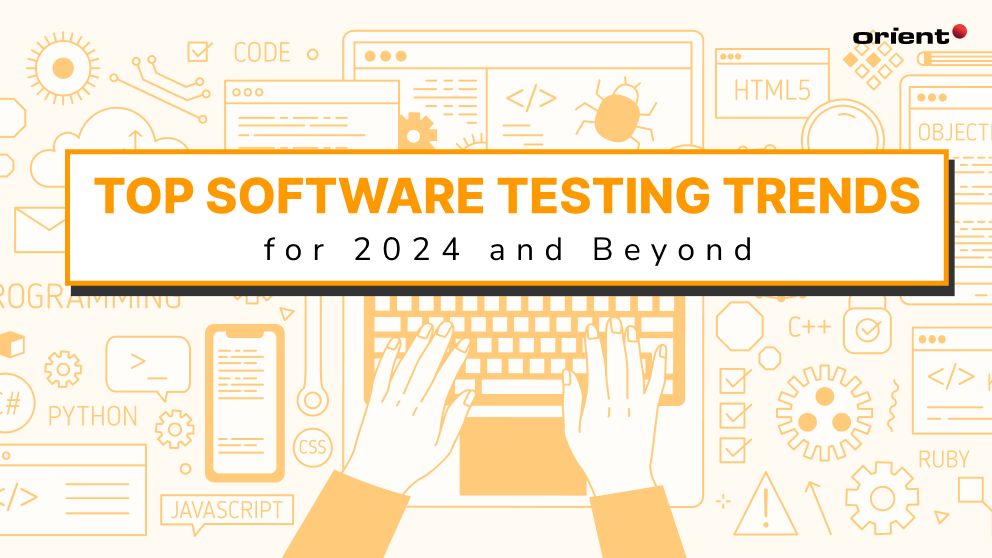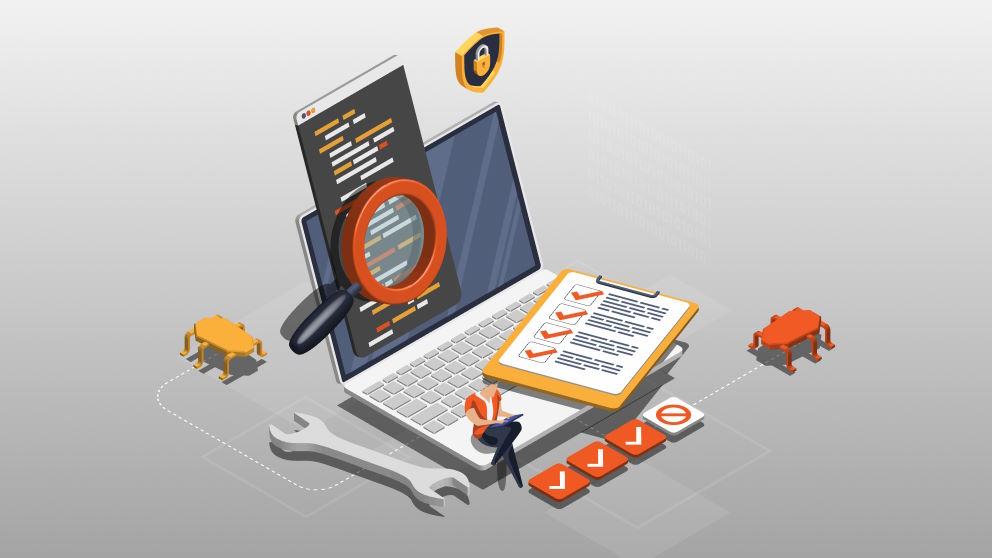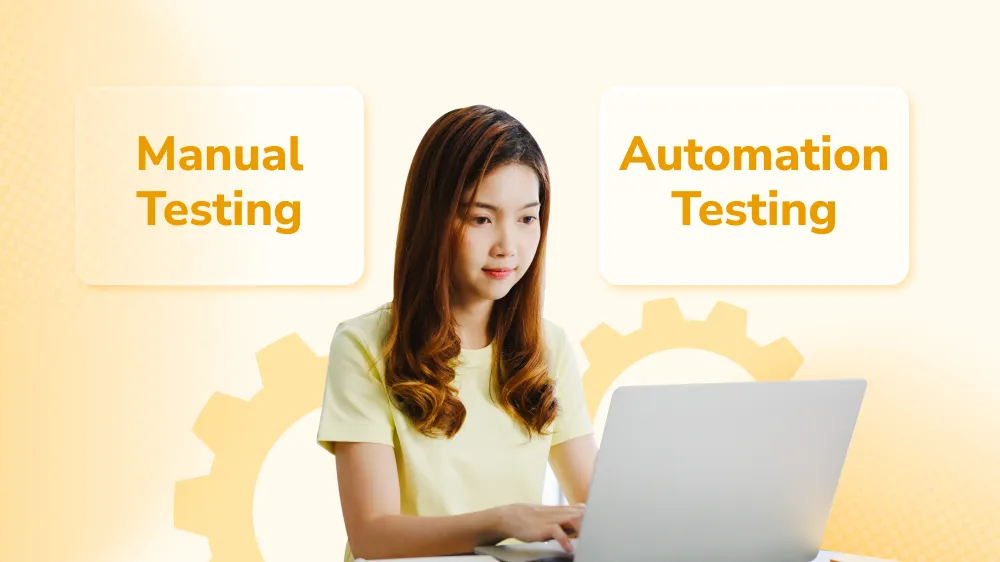Key Software Testing Trends for 2024 and Beyond

Content Map
More chaptersSoftware testing is the practice of making sure that a software application does what it is supposed to do.
Over the years, software testing tools and methods have evolved a lot, improving speed, accuracy, and device coverage. It is also being carried out sooner. What was once left until the last minute is now vital to each phase of the software development cycle. From conceptualizing and designing to coding and deploying, frequent testing helps teams catch and resolve issues early – before those issues escalate any further.
Of course, as a constantly evolving practice, software testing continues to progress. For example, embracing automation and machine learning. You’ll learn about the latest software testing trends and what these trends could mean for your business in this article. You’ll see that many of the testing trends in 2023 remain relevant while new ones emerge to shape the future of the software testing industry.
What Is Software Testing?
Software testing evaluates and confirms that each part of a software application functions correctly. This may involve testing an application’s performance, security, usability, and accessibility. It may involve testing the application in different environments to ensure it works on different devices (e.g., smartphones, laptops, notepads, desktop workstations) and operating systems (i.e., Android, iOS, Windows, Linux).
Software testing also confirms that an application will help a business meet its goals. For example, if an e-learning company wants to launch a web-based application (one that is more user-friendly than their current application), then the software development will have UI (User Interface) and UX (User Experience). KPIs (Key Performance Indicators). These KPIs will help the team measure the application’s usability and accessibility, such as how easy it is to navigate and find the right information or features.
There are many types of software tests, which range from functional and unit testing to performance and regression testing. Each type of test is designed to measure different things and achieve different outcomes. For example, unit testing confirms that each unit of a software application works correctly, while performance testing measures how well an application runs under different workloads. Using the right testing methods to test the right criteria is essential to getting the most out of the testing experience.
The Latest Trends in Software Testing

Below is a detailed breakdown of current and emerging software testing trends that will shape the future. Some of these trends are already in practice, while other trends are on the horizon. Either way, being familiar with these trends is a useful way to understand how different software development companies test their applications, both now and in the future.
So, if you plan to hire a software development team in the near future, then this knowledge will help you choose a team that takes testing seriously.
Artificial Intelligence (AI) and Machine Learning (ML)
Automation testing, generating test scripts that can be repeated automatically, has been around for decades. But, despite the benefits of this practice – automating repetitive, time-consuming, error-prone testing scenarios – lots of manual work is still required. For one, each time an application program is changed, testers must manually update their test scripts, as the parameters (set of user actions) may no longer match the program’s functionality. This, in itself, is a repetitive, time-consuming task.
Artificial Intelligence and machine learning play the role of reducing the amount of manual labor associated with test automation tools. By feeding training data – logs, test cases, documents – to an ML model, testers can automatically generate, audit, and run test cases.
With frequent training, the ML model will become smarter, better able to understand how the application program works, and better able to determine what the user experience should be like. The ML model will then produce more accurate, insightful data, which developers can use to address issues and make improvements. In addition, ML models can be trained to generate and run test cases that reflect the latest version of an application program, making version incompatibility a problem of the past.
Robotic Process Automation (RPA)
As its name suggests, RPA is the technique of automating repetitive, time-consuming business processes with the aid of software robots. It is not the same thing as test automation, but it can augment traditional test automation, making it more flexible and versatile.
The RPA testing strategy involves identifying repetitive, error-prone tasks and automating them. So, instead of developers manually validating every single function of an application program individually (which could take weeks), they can use RPA to run tests concurrently.
Scriptless Test Automation
Also referred to as “no-code” or “codeless” test automation, scriptless test automation is a method of automating tests without the need for human developers to write coded scripts. It leverages automation testing tools that provide an abstraction from the underlying test automation code, which makes it easier for non-technical testers to create and run automated tests.
Scriptless test automation is highly expected to be the way of the future testing process. The idea is to make testing accessible, streamlined, and less prone to error, primarily by eliminating scripting (coded instructions that mimic user actions).
Shift-Left Testing
Shift-left testing is about thinking “testing first-first” rather than “testing last.” This definition means that testers will be more involved in the software development process from an earlier stage.
This way, testing is not an afterthought but rather a critical part of the development process. By shifting left, development teams can catch issues earlier and address them more efficiently, ultimately saving time and resources as well as guaranteeing high-quality software.
IoT Testing
The number of worldwide IoT (Internet of Things) devices, physical computing devices that collect and transmit data over the internet wirelessly, in circulation is around 15.4 billion as of 2023 and is expected to grow, according to Statista. And for a good reason, too.
With the advanced capabilities of IoT devices, people at home and at work can monitor and manage, in real-time, the health and status of their smart devices. These include smart refrigerators that read out recipes while you cook, smart sensors that monitor the operating temperature of industrial machinery, and smart GPS devices with geofencing to keep high-value assets in their designated zones.
Naturally, as more businesses incorporate IoT technology into their products, more software development teams will have to incorporate IoT testing into their SDLC (Software Development Life Cycle). Which means? Testing different components of an IoT system, including the operating system, communication protocols, hardware and software, and network layers. Also, since most IoT devices collect and transmit personal and business-critical data, IoT security testing is vital to preventing threat actors from gaining unauthorized access to said test data.
Cloud Testing
Cloud testing is the practice of testing the functionality of an application program using cloud-based resources. Without needing on-premises infrastructure, permitted testers worldwide can perform various testing activities – performance, usability, integration, regression, and functional testing – over the internet in the cloud. Testers can also increase their test coverage by modifying their virtual environment to simulate different desktop and mobile devices.
Under this approach, there’s no need to worry about hardware availability, and it’s a great way to ensure functionality on multiple devices and web browsers, new and old. In addition, cloud testing can help speed up the SDLC, as it is faster than testing on traditional on-premises infrastructure, and it can help save the client and dev team money on the cost of ownership for testing tools. Both parties benefit greatly from this arrangement.
Virtual and Augmented Reality Testing
Although virtual and augmented reality is still relatively niche, the global VR market size is projected to grow to more than 22 billion USD by 2025, and the release of new devices, such as the Sony PlayStation VR2 and the Meta Quest 2, continue to push gaming forward with higher resolution displays, wider FOVs (Fields of View), and controllers with haptic feedback. The recently announced Apple Vision Pro, slated for release in 2024, is the company’s first foray into mixed reality and enables users to control the device through hand tracking and no controllers.
These promising developments indicate a bright future for the virtual and augmented reality sector. They also highlight the increasing importance of virtual and augmented reality testing in software development. The two fields are incredibly complicated, and they require thorough testing of different components. These include the user experience, device performance, compatibility with different hardware and software configurations, audio testing, and much more. Developers must also perform environmental testing, ensuring the virtual experience matches what a user would expect in the real world.
Automated Mobile Testing
As the name implies, this involves the use of mobile testing tools to automatically test the performance, security, reliability, and accessibility of a mobile application.
Specific tools exist to perform automated mobile testing. These include LambdaTest, which enables users to use Android and iOS emulators to perform cross-platform testing, and Appium, an open-source automation testing framework, which allows users to write automation scripts in Python, Java, Perl, and other programming languages. When done correctly, automated mobile testing can result in faster feedback and earlier bug detection, as well as expanded test coverage to more devices compared to manual testing.
API and Service Test Automation
Ever since Salesforce launched what many consider to be the first modern API at the IDG Demo Conference on February 7, 2000, companies worldwide have embraced APIs, using them to connect third-party services as well as monetize their content and features. Yet, while APIs are not new, the way we test them is changing. Over the years, automation has been increasingly used to test the quality assurance of APIs while ensuring they meet set performance, security, and compatibility requirements.
Some of the most popular automated API testing tools include Karate DSL, which incorporates automated testing, mock-ups, and performance testing under one platform, and SoapUI, which supports automated testing for REST and SOAP applications in a DevOps environment.
Big Data Testing
Big data testing is the process of ensuring a big data application is processing its data properly.
Unlike traditional software testing, which tests virtually every aspect of a software application, big data testing involves testing the functionalities that relate specifically to data collection and processing. These tests ensure the data is clean, properly organized, and free of corruption. The tests also identify instances of lost or stolen data.
Why is big data testing important? Because it gives organizations the confidence that they can trust their data and use it to make informed choices. And with the big data analytics market estimated to reach 68 billion USD by 2025, the demand for big data testing is only going to increase.
DevSecOps
Prioritizing security in software development is not a new concept. So why is DevSecOps (Development, Security, Operations) on this list? Because many companies still struggle with it. According to the 2021 State of DevSecOps report, 60 percent and 40 percent of respondents admitted facing technical and financial challenges with DevSecOps.
Moving forward, AI and ML may help companies achieve DevSecOps compliance. How? By automating the process of writing, deploying, and auditing test scripts. And automating the process of updating test scripts each time there is a change to the application. Furthermore, AI and ML can assist with continuous monitoring by detecting security vulnerabilities, bugs, and errors – early and often.
QAOps
QAOps (Quality Assurance + Operations) is the integration of quality assurance into DevOps, enabling teams to develop and test applications simultaneously. QAOps aims to detect defects as early as possible by performing automated tests and catching errors before they reach production.
But how does QAOps differ from traditional QA methods? With QAOps, testing is continuous throughout development and deployment, rather than just at the end of the development cycle. This results in faster feedback loops and more efficient bug detection and resolution.
Why Choose Orient Software for QA and Software Testing?
Since 2005, Orient Software has been providing QA and software testing services to global clients requiring greater visibility and predictability with their software development process.
With our standalone continuous testing services, you get a multi-skilled QA and testing team made up of hand-picked experts whose skills and qualifications match your project requirements. You also receive a dedicated project manager who ensures the proper testing methods are carried out to deliver superior software quality. Progress updates are frequent and transparent, giving you the assurance that your application is in capable hands.
By utilizing both manual and automated testing methods, we aim to reduce the time and cost spent on testing without compromising on quality while reducing unnecessary labor for greater cost savings. Plus, our test coverage can be as wide as you need it to be, ensuring compatibility with your chosen desktop and mobile devices. And, with nearly two decades of experience in software QA and testing, we continue to stay up with the latest industry standards and best practices – including Agile processes – utilizing the latest technology to deliver better and faster results.
Contact Orient Software today for more information about our software QA and testing services.







